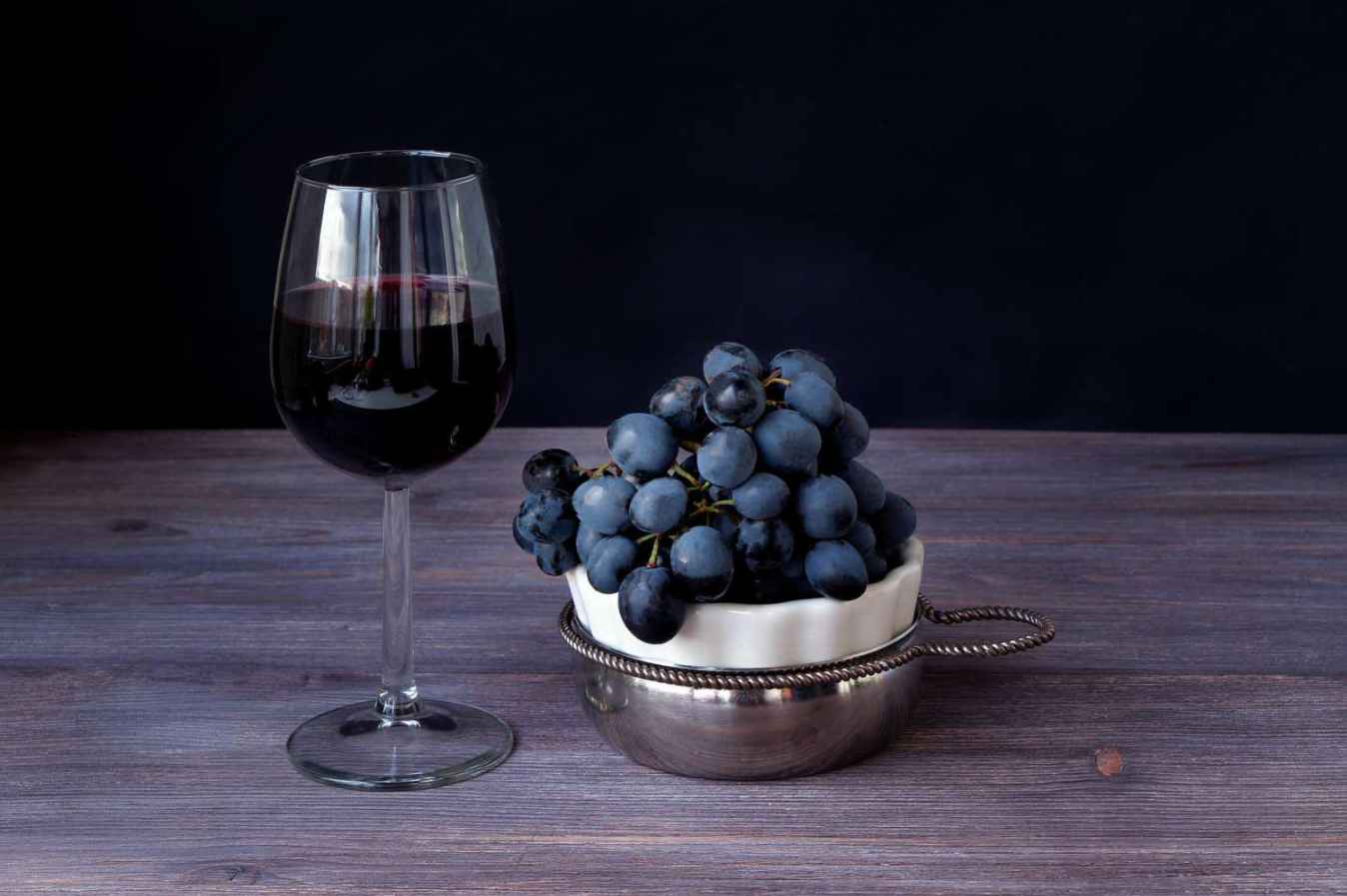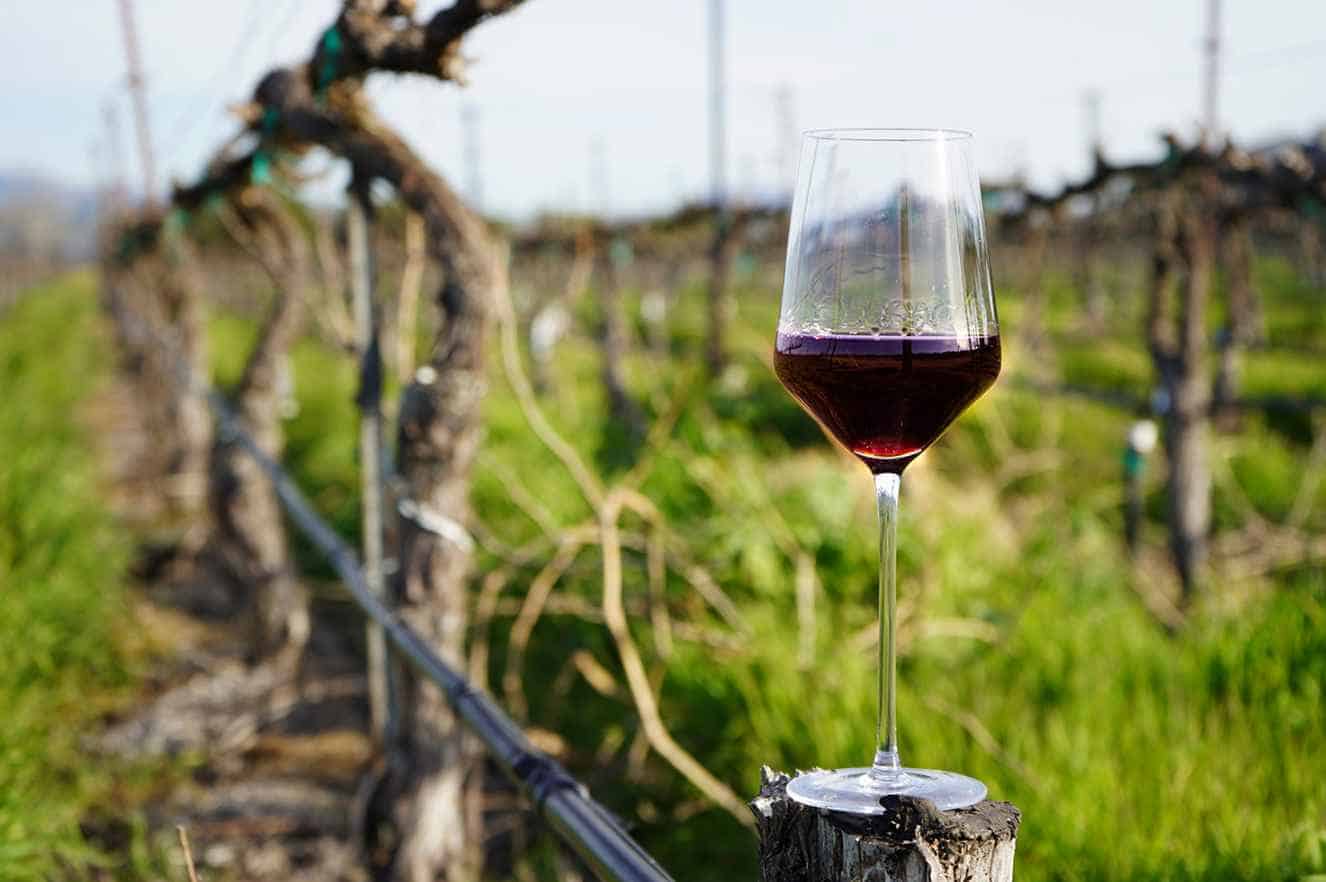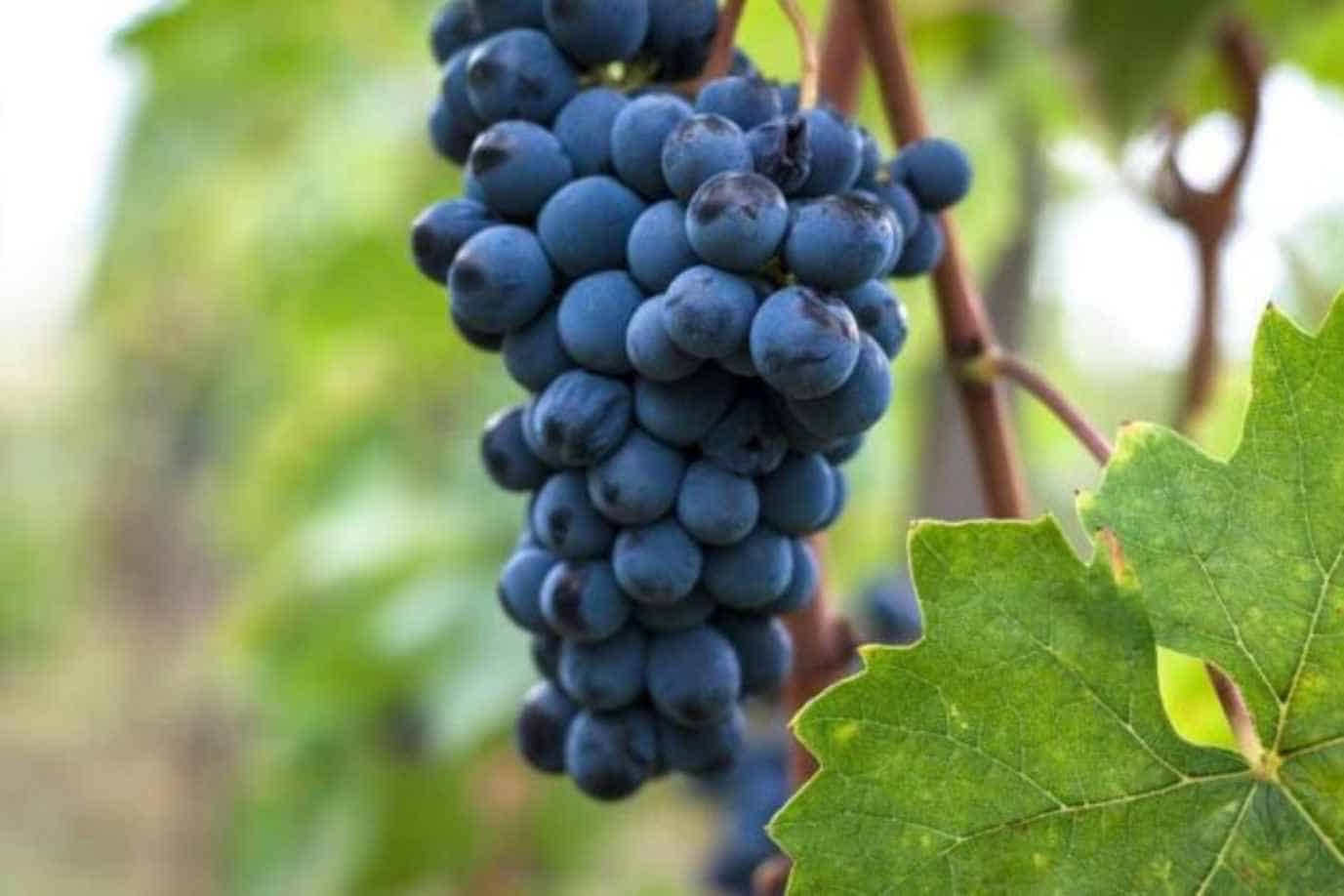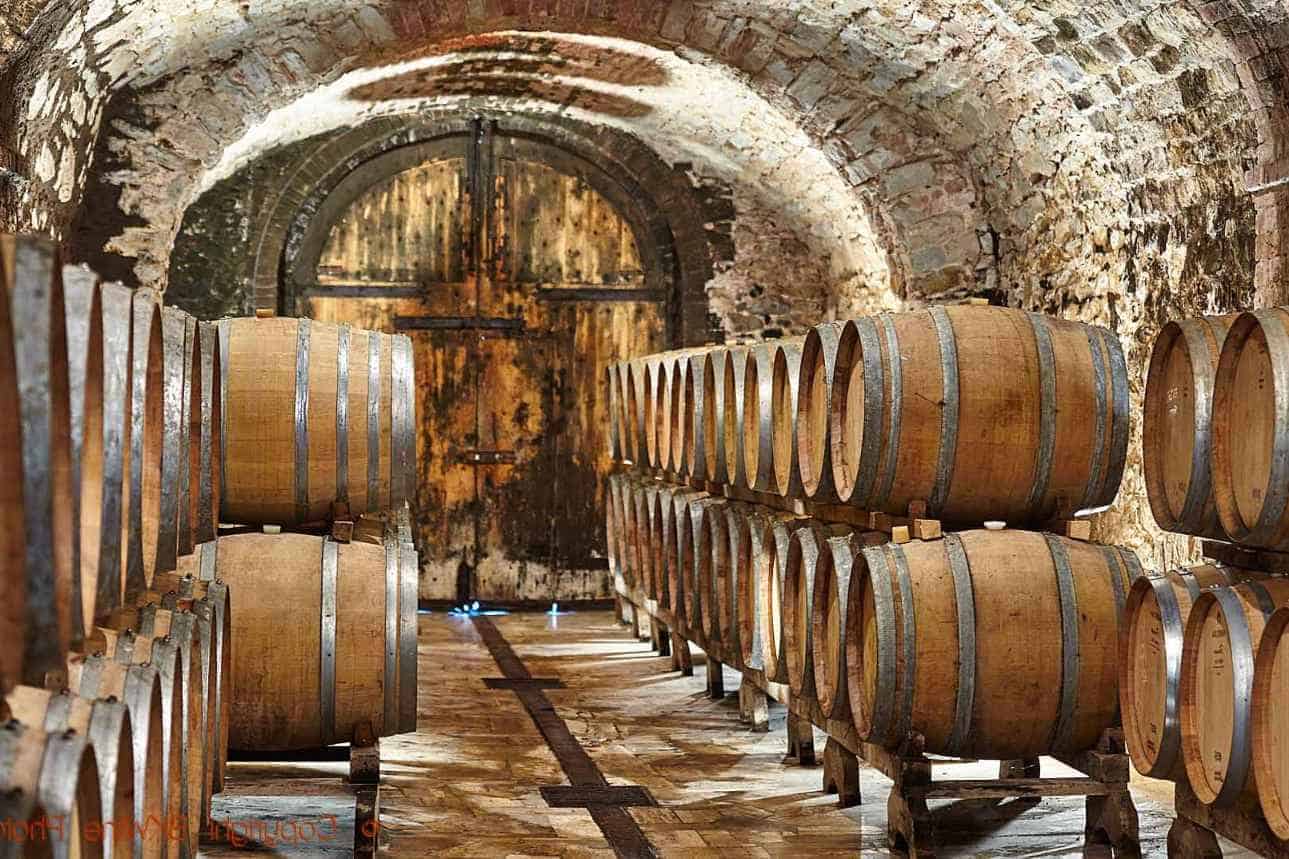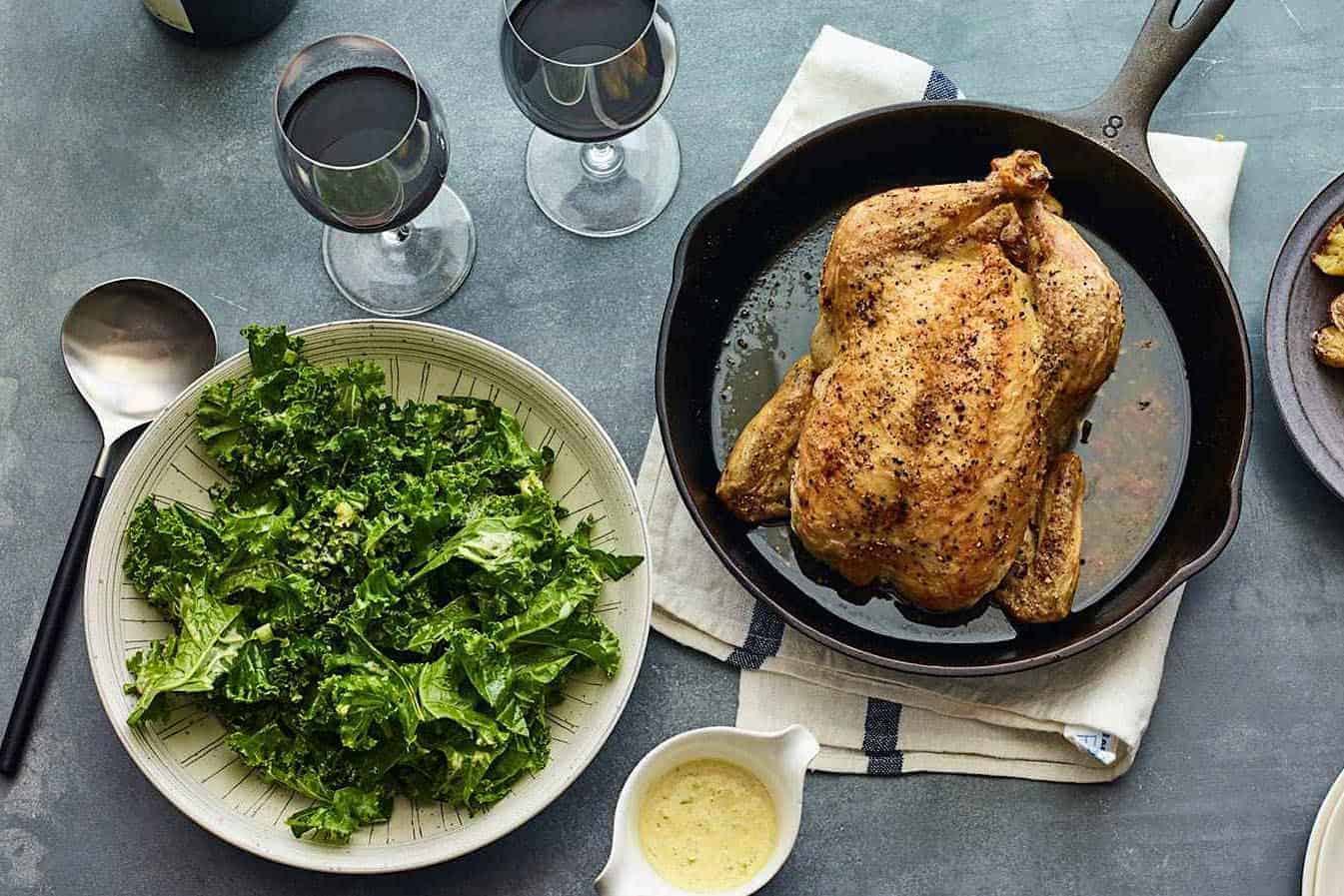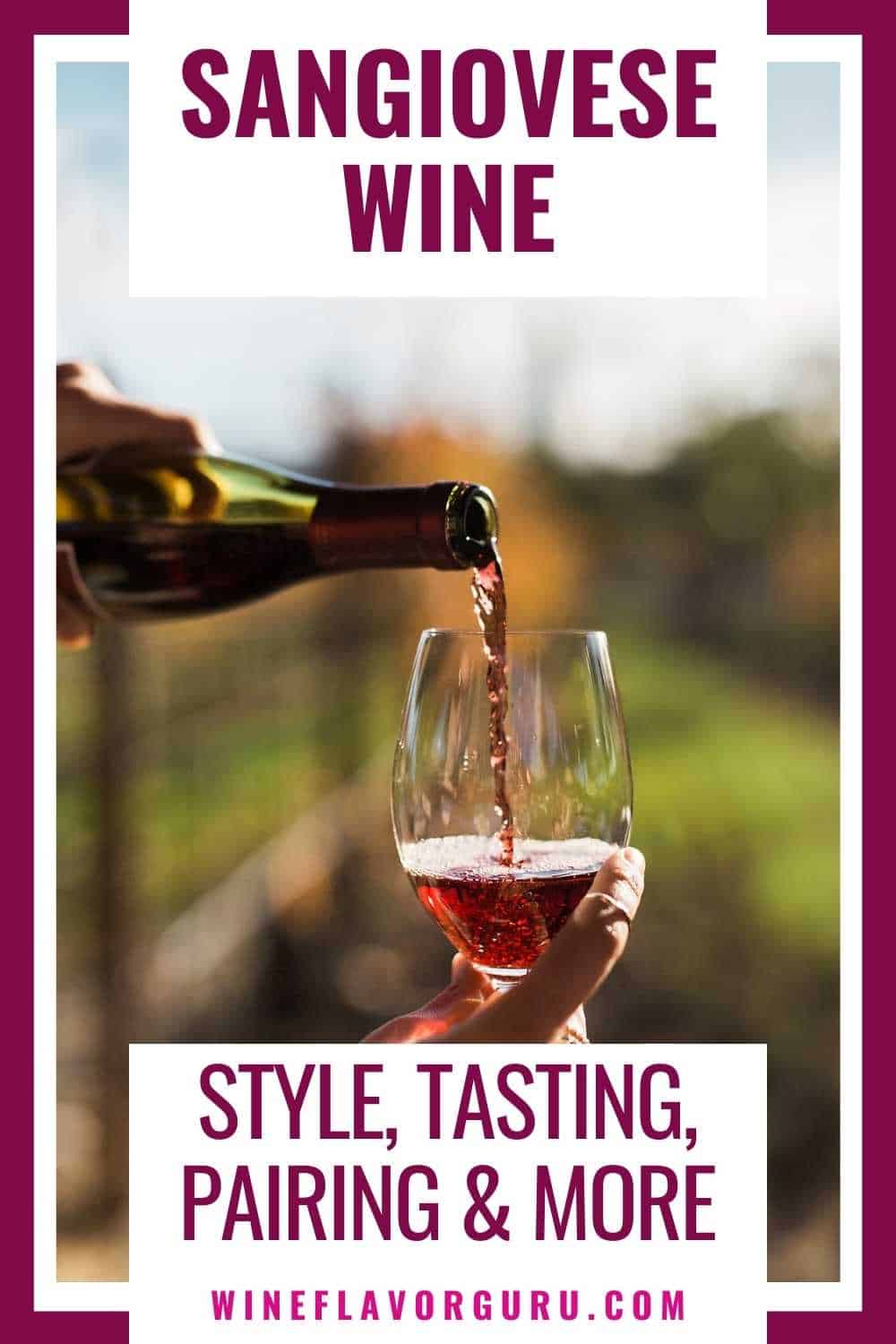Are you a fan of Italian wines? If yes, then a bottle of Sangiovese will make your day. What is Sangiovese wine? It’s vino from Italy’s widely planted grape variety. This red wine can go from fruity or savory, making it a versatile drink option. Read on to learn more about Sangiovese wine.
What is Sangiovese Wine?
Sangiovese pronounced as “san-jo-vay-say”, is a dry, red wine from Italy. Wine lovers adore it for its tighter tannins and high acidity. It’s a young wine with a robust structure. This Italian red can go from rustic to fruity depending on the grape’s terroir.
Overview of Sangiovese Wine
Here is a summary of Sangiovese wine’s features.
| Regions | Tuscany, Australia, California |
| Origin | Tuscany |
| Dominant Flavors | sour cherry, cranberries, and mulberries |
| Sweetness | Dry |
| Tannins | high |
| Body | Medium to full |
| Acidity | high |
| Color | Light to coppery red |
| ABV | 13% – 15% |
| Oak | Light oak aging |
| Ageability | 4-7 years |
How does it taste?
Sangiovese boasts solid tannins and high acidity. It has herbs and cherry flavors with tobacco and leather notes. Interestingly, the flavors evolve as the wine ages. The taste can go from plums to bay leaves and blood oranges.
Many wine experts liken this wine to a chameleon. Its flavors can range from rustic to earthy. It can also be fruity and savory. Generally, the taste will depend on where the Sangiovese grape grows. However, it will always showcase cherry and tomato flavors.
The characteristic flavors and aromas of Sangiovese are the following:
- Cherry
- Plum
- Violets
- Sage and Rosemary
- Leather
- Licorice
- Brick and Clay
- Smoke and Tobacco
Why should you try Sangiovese wines?
Sangiovese wines offer a glimpse into Tuscan life and culture. It has an exciting history and strong ties to Italy. Drinking this wine allows you to appreciate the region’s unique topography.
Aside from these technical aspects, Sangiovese is simply delicious. It goes well with many dishes due to its robust tannins and acidity. Lastly, it is available at a wide range of prices. There will always be a Sangiovese for every budget and occasion.
What is a fruit-forward Sangiovese?
This type of Sangiovese exudes cherry, cinnamon, and cloves. Some wine connoisseurs believe it evokes the Christmas spirit. It’s silkier and less aggressive than its rustic counterpart. It’s best to drink New-World styles for a better experience.
What is a Traditional and Rustic Sangiovese?
This traditional Sangiovese variety retains its signature high acidity. It also showcases mocha, dark chocolate, and herbal flavors. Its solid tannins and savory flavors make it a food-friendly drink.
Where does Sangiovese Wine Originate?
Sangiovese grows in Tuscany and other parts of Italy. It’s the dominant grape in many Italian wine blends, making it a vital grape variety.
What is the Sangiovese grape?
Sangiovese grapes are famous for their adaptability. They can easily adjust to their environment’s features. However, they have common characteristics across the region. Sangiovese grapes typically have the following:
- Long growing seasons
- Light color
- Fine tannins
- Thin skins
These grapes can thrive almost anywhere. But the ideal location would be in dry and hot climates. They love to grow on limestone terrain.
What are the wine regions of the Sangiovese wine?
Italian wine producers were the first to discover and process the Sangiovese grape. But they now thrive in many parts of the world. The top regions producing Sangiovese wine include the following locations:
- Italy: Ten percent of the grapes grown in Italy are Sangiovese. They may be a Tuscany native, but they also grow in other regions. These places include Umbria, Romagna, and Campania.
- Argentina: In the 19th century, Italian immigrants introduced Sangiovese to Argentina. Presently, the Mendoza region cultivates most of the country’s Sangiovese grapes.
- France: The second largest Sangiovese producer is Corsica. This French island cultivates these grapes and calls them “nielluccio”.
- Australia: Sangiovese grows in Australia’s Barossa Valley. It’s an award-winning wine region located in Adelaide, South Australia.
- United States: The success of Super Tuscan wines inspired American winemakers to cultivate Sangiovese. This Italian grape grows in Washington State, Sonoma County, and Napa Valley.
How is Sangiovese wine produced?
To make Sangiovese wine, producers macerate the grapes and ferment them. Then, it goes through pressing. The wine matures in barrels or tanks for 6 to 18 months. They are stored in the cellar for up to twenty years. Lastly, they’re bottled and packaged for shipping to stores.
How to Enjoy Sangiovese Wine
A glass of Sangiovese wine is an excellent way to enjoy Tuscan flavors. We’ve asked wine connoisseurs to share the best serving and tasting techniques.
What is the best serving temperature?
You can best enjoy Sangiovese when it’s slightly chilled. A 15-minute stay inside the wine chiller or fridge is enough. The optimal temperature is 60-65 degrees Fahrenheit.
Do you need to decant Sangiovese wine?
A short stint in the decanter will do wonders for your wine. Decanting allows the fruity flavors to shine. It also softens the tannins. It’s also okay if you can’t decant. You can swirl the wine glass vigorously for the same results.
What is the best wine glass to use for Sangiovese wine
The Sangiovese wine doesn’t have a strong aroma. So, you can do away with wide-bowled glass. You can serve it in a Chianti glass. It has a smaller bowl and smaller capacity than Bordeaux glass.
What are the best Sangiovese food pairings?
Sangiovese’s robust acidity and firm tannins make it perfect for food pairing. It goes well with many Italian and American dishes.
- Pasta
- Pasta with tomato sauce
- Spaghetti with meatballs
- Spaghetti Aglio e Olio
- Pasta Bolognese
- Gnocchi in sage butter sauce
- Pasta pesto
- Meat
- Rare grilled steak
- Pan roasted chicken
- Lamb chops
- Barbecued ribs
- Roasted meat
- Grilled Hibachi Meats
- Pizza
- Charcuterie
- Salami
- Cured sausages
- Prosciutto
- Pancetta
- Bresaola
- Salsiccia
- Vegetables
- Roasted Farro and Carrot Salad
- Creamy Mushroom Rissoto
- Grilled vegetables with olive oil
- Herb and butter vegetables
- Cheese
- Provolone
- Aged Parmesan
- Tuscan Pecorino
- Grana Pedano
Sangiovese Buying Tips
Pay attention to the label when buying Sangiovese wine. The term Sangiovese may refer to the grape name. But it will always have a space on the bottle’s label. One of the best ways to spot excellent Sangiovese wine is to select bottles with the following names:
- Super Tuscan
- Chianti
- Brunello di Montalcino
They may be pricey options, but they’re worth every cent. If these variants aren’t available, a bottle of Syrah is a good alternative.
This video gives more tips on buying the best Sangiovese wines.
What are the Best Sangiovese Wines?
Are you ready to purchase your bottle of Sangiovese wine? We’ve asked Italian wine fans for their recommended brands. We have listed them in no particular order.
1. 1988 Case Basse di Gianfranco Soldera Toscana IGT – Brunello di Montalcino DOCG
This wine is an exciting adventure in a glass. At first, it will tickle your palate with prune, charcoal, and tea flavors. Then, the taste evolves with every sip.
Region: Tuscany, Italy
Tasting notes: Chocolate, tobacco, fruit, and charcoal
Average Price: $ 1107
2. 1997 Avignonesi Occhio di Pernice Vin Santo di Montepulciano, Tuscany, Italy
This red wine will surely delight red wine lovers. It may be as thick and uniquely sweet as maple syrup. But it works well as a beverage. You will also get hints of roasted chestnuts and prunes.
Region: Tuscany, Italy
Tasting Notes: Roasted chestnuts, brown sugar, prunes, and sweet figs
Average Price: $ 629
3. 2001 Casanova di Neri Cerretalto Brunello di Montalcino DOCG
Wine collectors and enthusiasts rave about this Sangiovese wine. It’s a full-bodied wine that connoisseurs aim to add to their collections.
Region: Italy
Tasting Notes: Coffee, chocolate, crushed berries, treacle tart, and light raisins
Average Price: $ 349
4. 2010 Il Marroneto Madonna Delle Grazie Brunello di Montalcino DOCG
This wine features a ruby-red liquid with crimson highlights. It ages perfectly in the cellar for up to 20 years. Its firm tannins and intense flavors will bring you to the Tuscan highlands.
Region: Italy
Tasting Notes: Wet earth, pressed violets, berries, licorice, herbs, and white truffles
Average Price: $ 469
5. 1983 Case Basse di Gianfranco Soldera Brunello di Montalcino Riserva DOCG
This old vintage showcases fruit-forward aromas and flavors. It’s a dark red vino that is slightly earthy on the nose.
Region: Tuscany, Italy
Tasting Notes: red cherry fruit
Average Price: $ 1823
6. 1891 Biondi Santi Tenuta Greppo Riserva Brunello di Montalcino DOCG
This ruby rose drink is every wine collector’s dream. It’s a vintage wine aged in oak casks for four years.
Region: Italy
Tasting Notes: treacle-flavored pipe tobacco
Average Price: $ 24, 214
7. 1995 Fattoria Poggio di Sotto Brunello di Montalcino Riserva DOCG
This Sangiovese wine presents a ruby red liquid with garnet highlights. It’s known for its spicy background and intense bouquet.
Region: Tuscany, Italy
Tasting Notes: strawberry, custard, and sour cherry
Average Price: $ 480
8. 2015 Poggio San Polo ‘Vigna Vecchia’, Brunello di Montalcino DOCG
This Sangiovese wine is famous for its intensity and depth. The hints of roasted coffee beans and black cherry jam pair well with the smooth tannins.
Region: Italy
Tasting Notes: tobacco, camphor, licorice, and roasted coffee
Average Price: $ 275
Conclusion
The Sangiovese wine may seem complex at first. But if you get to know “what is Sangiovese wine?”, you’ll understand its appeal. Its robust flavors and food-pairing abilities make up for its hefty price tag.

George Moore, co-founder of Wine Flavor Guru, is a charismatic entrepreneur with a rich background in California’s wine industry. Alongside Sylvia, he transformed a Sonoma County vineyard into a source of premium wines. George’s expertise in sourcing exceptional grapes and his approachable style make wine appreciation both accessible and engaging.

